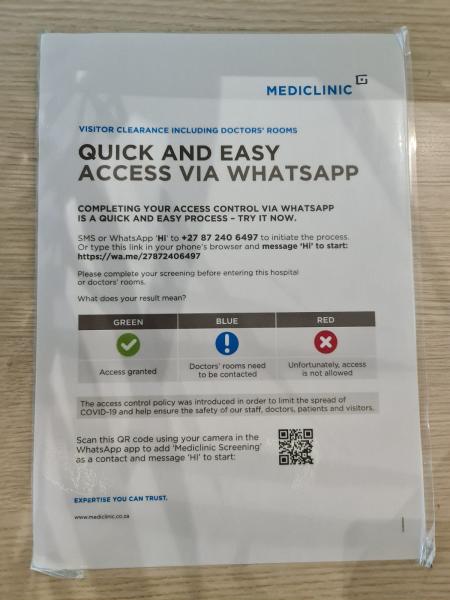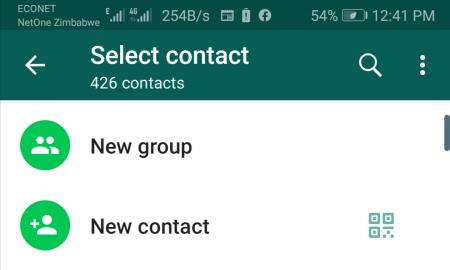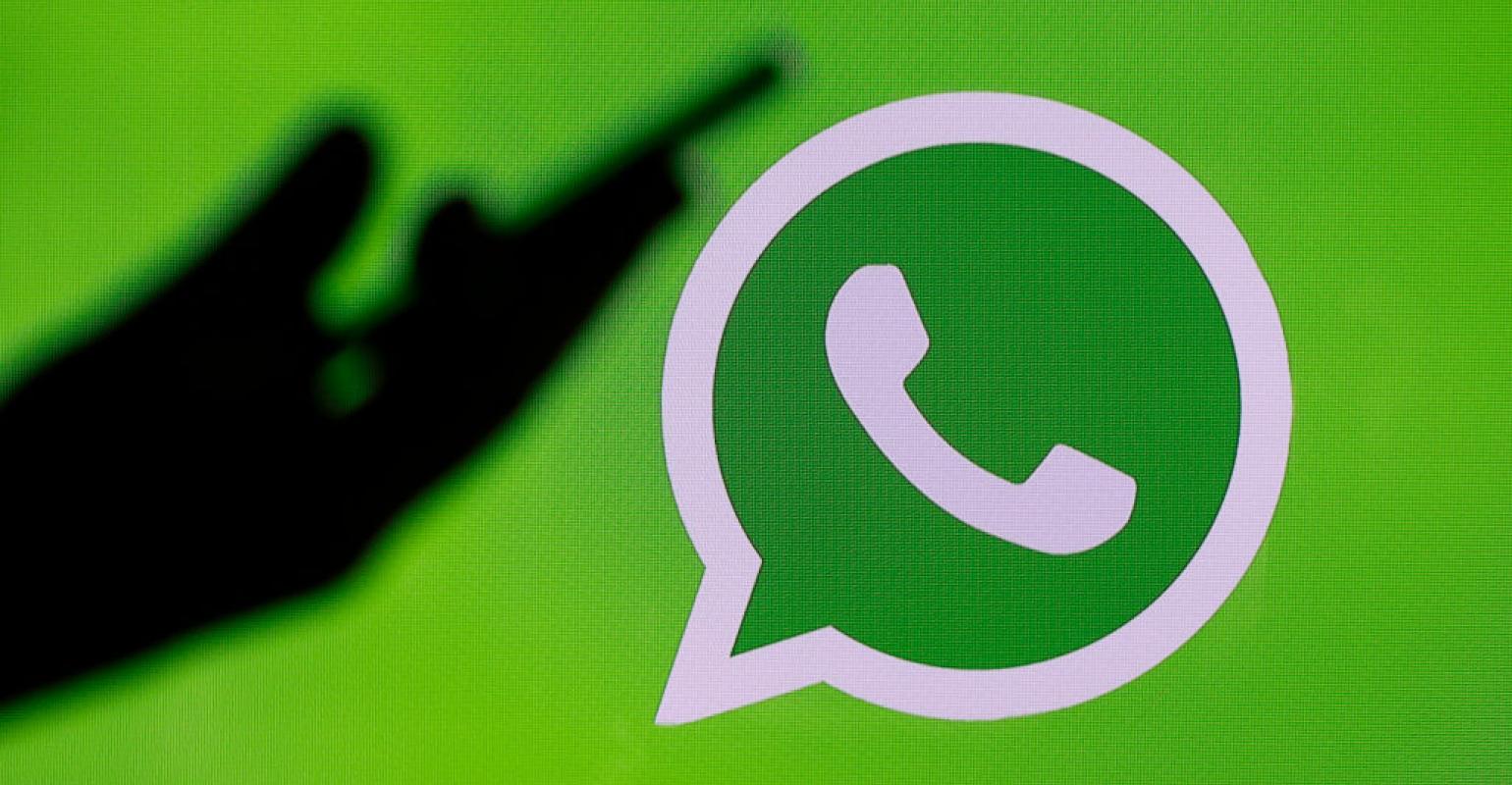You are all probably sick of me repeating the familiar refrain that when it comes to Southern Africa at least, WhatsApp is the internet. This is thanks in part to WhatsApp bundles but it’s not just that, everyone is already using it so it’s easier to join and use the App compared to some others. It seems businesses and organisations are starting to take notice too. An innovative clinic and hospital chain in South Africa, Mediclinic has a WhatsApp chatbot that is very simple but pretty effective which they are using to screen patients who come to seek care at their branches. It’s something clinics and hospitals in Zimbabwe can learn from. Most clinics have a human stuck doing the screening job from the moment you get onto their premises. This is a slow process that leads to queues.
How the bot works?
As I said it’s a pretty simple bot. When you get to one of the clinic’s outlets you encounter this post near the entrance.

What I really like about the instructions is that you don’t even have to manually add the bot’s number. For me, this is the most annoying part about most bots. Humans, at least the ones I know, are not good with numbers and sometimes it takes a few minutes to save the right number. In this case, all you need to do is:
- Open WhatsApp
- Tap on the new/begin chat icon
- Tap on the QR icon next to the New Contact option
- Scan the QR code and
- Voila just like that, the bot’s contact is saved to your phone and a chat window is opened.

All WhatsApp bot owners must create a QR code in my humble opinion. It streamlines the onboarding process. The process of creating a QR code is so trivial there is really no excuse not to do it.
- Just follow the same steps above but
- Go to the “my code” tab instead and save the screenshot and use it in your advertisements. People will just have to scan instead of manually saving your number.
Anyway back to the bot. You just send a message that says Hi, then you answer a series of test questions using Yes/No Answers. Based on your answers you will get a response from the bot. You can either proceed to a manned clearance point, go to a suited doctors room or be turned away.
An important point of first contact
That seems trivial but it can be useful as a way of preventing queues and crowds. Compare this to the traditional way we do things at our public hospitals where surly staff are the first point of contact. They carry out the same screening procedure but do it manually which is tedious and frustrating to both them and those seeking medical attention.
Of course, some people can just lie to the bot and get a wrong recommendation, there is nothing stopping you from doing that. Then again you can always lie about having had COVID-19 to a human too. If you don’t have clearly visible symptoms you can even get away with it. The reasonable assumption, in this case, is when you are seeking medical attention you don’t lie about symptoms as this would harm you too.
A good feature for chatbots
This could be a nice feature to have for chatbots. It can be useful to a lot of entities including banks. I was at the Bank today and most people in these queues are seeking routine help and clogging up the customer service desk. The bulk of people shouldn’t even be there.
Banks could have a chatbot ask people a series of questions via WhatsApp. This way you don’t have people going to the bank to ask for a bank balance. If the bot is unable to provide help it can generate a day pass. Those visiting the bank can use that pass to get past security at the bank’s entrance. If you have WhatsApp but don’t have the pass, you have to through the chatbot first.
That would free up so many resources. It’s not perfect of course, for example, people will just figure out a series of answers that would get you a pass and there are those who do not have WhatsApp but it will significantly reduce the queues we often see outside banks.-techzim

